How Tasmania – Apple Isle, then pinot isle and whisky isle – became the whole larder and cellar
As food producers, chefs and tourists gravitate to Tasmania, hundreds of individual ‘Tassie moments’ are helping to create something bigger: the transformation of a state in culinary, social and economic terms.
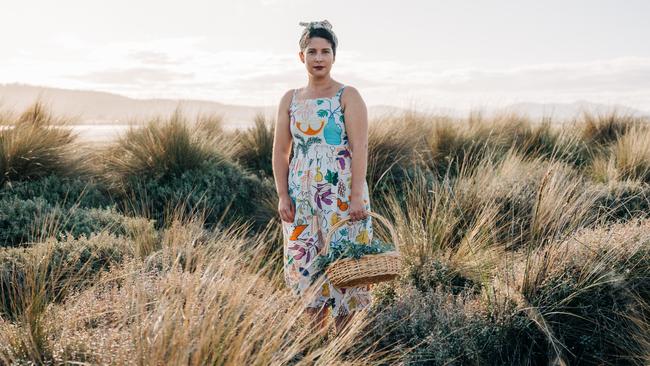
It’s called the “Tassie moment” – the point when jaded mainlanders snap and declare, “That’s it. We’re moving to Tasmania.”
“We always said, ‘If we win the lotto we’ll buy a farm’,” says Kim Croker, a former teacher who, with husband Daniel, relocated from Brisbane to Tasmania’s lush Tamar Valley in late 2016. “Then we just said, ‘How about we just do it now anyway?’ So we sold our house, quit our jobs, bought a property and moved to Tassie.
“And Tassie is perfect. Lots of rainfall, not too hot, not too cold – although some might disagree with that – and a slower pace, which is what we were looking for. It’s a really close food community, from the chefs to the farmers to the consumers. Being a small place, everyone knows each other and is really supportive.”
The Crokers are part of a growing movement of food-forward professionals forging a new life down south – far down south – in a bid to escape the pace of mainland city life and explore agricultural or pastoral pursuits instead. Once derided as a backwater where a gourmet meal consisted of a curried scallop pie and a 10-ounce of Cascade, Tasmania has become an entrepreneurial foodie mecca and culinary tourism powerhouse. Tree-changers who have never experienced a long Tasmanian winter, much less tilled its soil, are gambling everything on a belief that the Apple Isle is the place to learn free-range, organic or regenerative farming.
“People see they can make a living by going back to slower farming methods, and artisan products, rather than mass-produced commercial produce,” says Croker, who with Daniel launched a heritage Berkshire piggery named Fork It Farm at Lebrina in the East Tamar Valley. Producing just 150 pigs a year, the farm supplies charcuterie to top restaurants in Launceston and Hobart, and sells directly to consumers online from a farm shop, as well as at farmers’ markets in both cities. The couple’s move promoted Croker’s Queensland-based parents, Kevin and Lyn Bell, to catch the Tassie bug, too – the couple sold their Gold Coast home and bought a Tamar property where they now offer farm-stay accommodation. Kim’s sister Abbey also left Brisbane to join the business, making pet food from the farm’s waste products, as well as pickles.
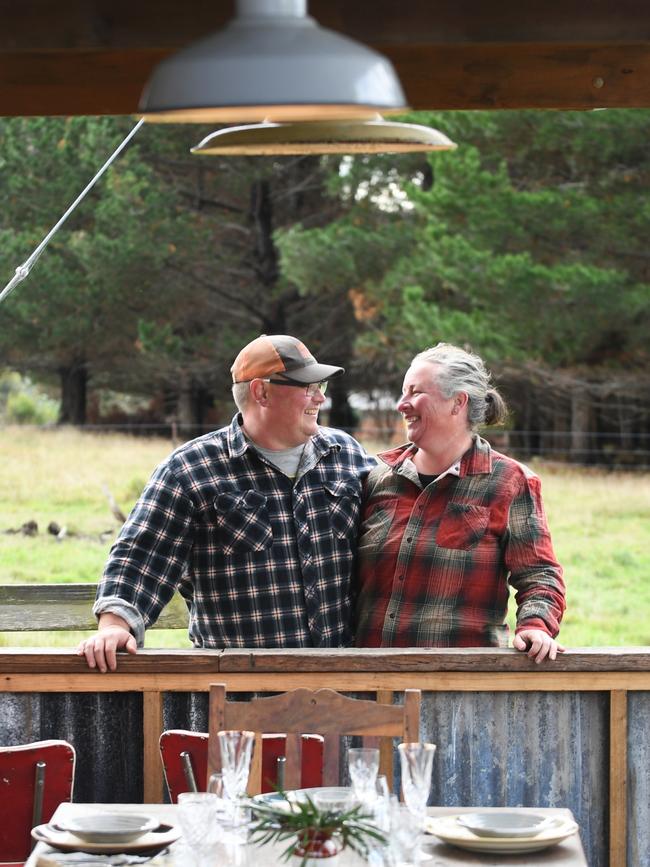
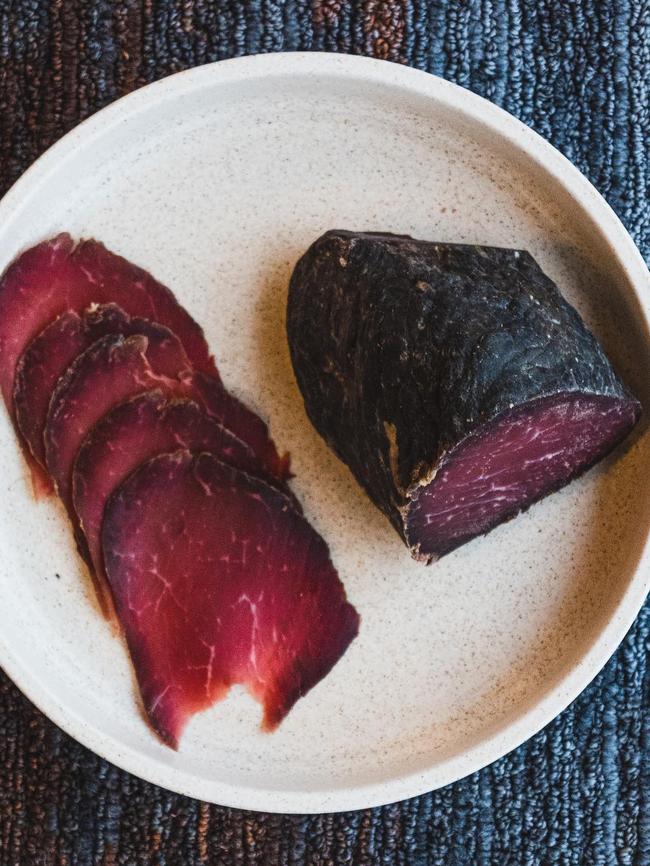
In Tassie, such stories are common. A 2021 survey of Tasmania’s small-scale producers by sector group Sprout found 70 per cent had relocated from Victoria or New South Wales. About 60 per cent were farming with their partner, and 20 per cent had extended family members involved in the business.
Like farmers, chefs – some of whom have made it as celebrities from their time in big-city restaurants – are also shunning Melbourne and Sydney for Hobart and Launceston, the Huon Valley or Freycinet Peninsula. In Hobart and Launceston, cool restaurants with talented chefs, and bars with attitude, are popping up. Even in the regions, a runaway tourism industry is helping generate demand for new breweries, distilleries, slow food and quality produce.
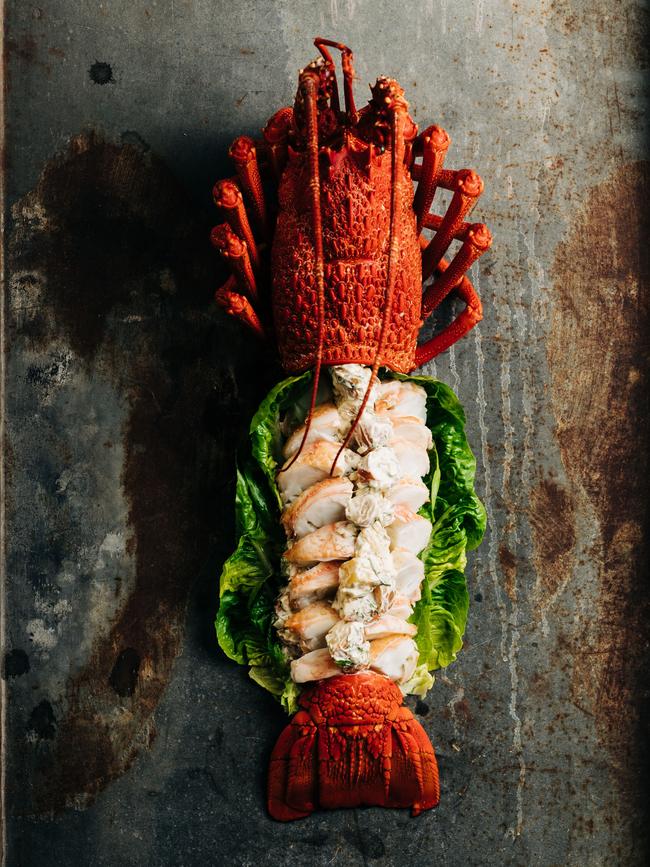
“Tasmania goes through waves,” says Analiese Gregory, a one-time darling of the Sydney food scene who packed up her knives six years ago for a new life off the mainland. “I first started coming to Tasmania to go to [restaurants] Garagistes and Franklin, and then came places like Templo, Fico and Agrarian Kitchen. A bunch of places closed up over Covid and there was a bit of a lull. But it’s all going again.” Gregory, who lives in a 1910 weatherboard cottage in the Huon Valley, an hour from Hobart – “there’s a wood fire in every room, and I’ve learned to wear a lot of thermals and embrace ugg boots” - made the move after growing weary of big-city life. “I was living in Sydney and not really enjoying it,” she recalls. “I hadn’t been considering moving to Tasmania but I was offered a six-month contract at Franklin and took it. And I’m still here.”
She says the thing she loves most about the island is its exquisite produce, and the access she has to it, as well as the slower pace of life. “I’ve lived in quite a few out-of-the-way places in France and elsewhere and I think that helped me prepare for it a bit more – and I was ready to get away from the city, I was done with it.”
Madi Peattie, who founded Farm Gate Market in Hobart 14 years ago, says the local produce and food scene is booming. “Things really shifted with the MONA effect when [museum founder] David Walsh encouraged people to believe in themselves and to realise that things can be done here, and in a small, cool way,” she says. “Everything just started to blossom and a lot of sea-changers, tree-changers and now e-changers have brought new ideas, new creativity. Tasmania is a starkly different place to when I grew up. Farming has become cool again; it’s not a thing that old guys do.”
Another influence has been the annual winter festival Dark Mofo, a food and culture event that embraces the bone-chilling Hobart winter with a feast of unique and significant events, including the Dark Mofo Winter Feast, a night food festival celebrating more than 85 Tasmanian food, beer, wine and spirits producers.
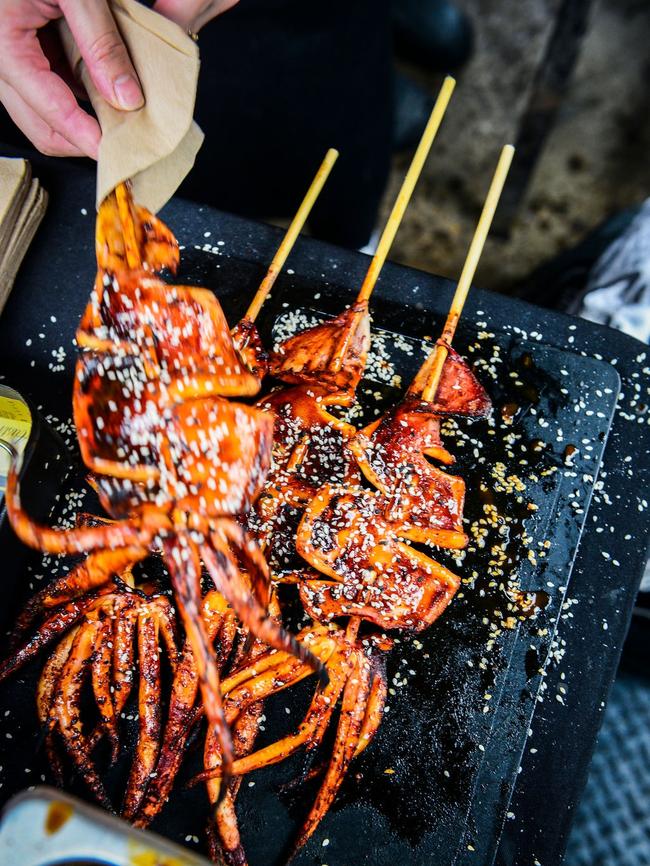
Peattie, who is also the founder of Hobart’s food stall fiesta Street Eats @ Franko, in Franklin Square, says the Farm Gate Market in Bathurst Street started with 12 stallholders, only one of whom sold fresh produce. Today, it has more than 170 small-scale local producers on its books, many of whom also supply top restaurants. Two other Tasmanian farmers markets – Launceston’s Harvest Market and the Bream Creek Farmers Market – have sprung up since.
Oliver Wichmann and Miquela McGuiness are two more professionals who, disenchanted with “the grind of Sydney”, were keen to take an experiment with urban farming to another level. “We wanted to live a more rural life and start a family, so we decided to get some land and make a living off it,” Wichmann says. “We took the leap and moved down to Tassie in July 2018. Climate was a big factor. It’s lush and just so different to the mainland. Farming where summers are 40C is too much. And there’s a good food scene down here.
“If we wanted to do market gardening in Sydney, we’d be hours away from our actual markets, and land prices are ridiculous. Here, there is more opportunity to get a decent parcel of land and still be close to a market.”
-
“Farming has become cool again; it’s not a thing that old guys do.”
-
The couple, now expecting their second child, cultivate a half-acre intensive market garden at Geeveston in the Huon Valley, using chemical-free, regenerative techniques that improve the soil. They grow baby greens, salad lettuce mixes, micro-greens (radishes, broccoli, red mustard, red cabbage and pea shoots harvested three to four days after sprouting) and micro-herbs (basil, chives and coriander).
Their Huski Greens produce is sold to local restaurants, as well as at Hobart’s Farm Gate Market, and via the Tasmanian Produce Collective, an online service allowing consumers to buy direct from more than 30 local producers, whose wares are then collected from central delivery points.
They hope to branch out, hatching plans for a local produce collective, a community market garden and not-for-profit programs to educate children and others about the benefits of growing produce. Wichmann sees room for growth in the boutique produce sector. “In the past 10 years it has really taken off and run,” he says. “Matthew Evans on The Gourmet Farmer probably had a role in getting people to move down here and start farming.”
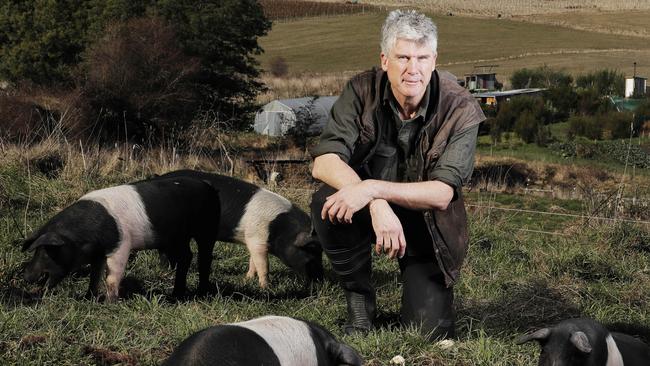
He cautions new entrants to do their homework and not glamorise the lifestyle. “People are looking to reconnect with nature and there’s definitely a push on social media that makes it look sexy or romantic,” Wichmann says. “It definitely has its moments but it’s hard work and a lot of people overlook that. It has to be a business. It has to make money so we can employ people, pay taxes and electricity.
“There is a dark side, too, with … YouTubers exploiting that image to sell books or online courses. But it is great that people are connecting and showing an interest in where their food comes from, and how they can make the right choices as consumers.”
The Sprout survey suggests about 60 per cent of Tasmania’s niche producers sell direct to customers and a similar percentage to cafes and restaurants. And they are growing, with 70 per cent looking to expand their business and more than half planning to invest at least $100,000 in the coming five years. Despite the cost-of-living crisis, Tasmanians and visitors alike are willing to dip into their pockets for top-end local food and tipples, sales of which rose almost 10 per cent in 2020-21 to $4.5 billion.
Tourism is turbocharging Tasmania’s foodie renaissance. A Tourism Tasmania visitor snapshot taken in December shows “food, wine and beverages” have become the third biggest motivator for tourists to visit the state, cited by 43 per cent of visitors. The prospect of grazing and guzzling one’s way across the island is now more of a lure than even the state’s rich history and heritage; pinot and prosciutto are more desired than penal history and Port Arthur. This may explain why visitors to the island are spending more than ever.
Peattie argues the sheer diversity of Tasmania’s produce – from wagyu to wasabi, wine to whisky, cherries to avocados – is key to its appeal. “I think we do have an edge because of the diversity of what we offer – red volcanic soil in Tasmania’s north and sandy, silty soil down here in the south,” she says. “We have so many different regions. Coles Bay with its beautiful red mountains, where the wine is really spicy. Tassie is a small but really powerful package. What we do, we do well – and we are extremely passionate.”

Chef Massimo Mele, who was born in Tasmania and raised in Naples, made his name in top restaurants interstate, such as Melbourne’s Donovans and Sydney’s La Scala. After an absence of 20 years, in 2015, he returned to the land of his birth “for good” – and hasn’t looked back.
As food director at Launceston’s Grain of the Silos cafe and restaurant, and culinary director at Hobart’s Peppina, Mele combines his love of Tasmanian produce, Italian heritage and extensive experience. “I was never coming home,” explains the straight-talking but passionate chef. “I never wanted to come back to Tassie. But the Tassie I left in 1998 is really not the Tassie I came back to. When I started dating my wife about eight years ago, I came down for Dark Mofo. I thought, ‘What is going on here? This is something I’ve never seen before!’ And then I did a boat trip with tourism entrepreneur Rob Pennicott. We were grabbing seafood out of the water and eating it. I started to see Tassie from a different perspective and spent more time here, while still working in Sydney. Eight years and two restaurants later, I think Tasmania is an incredibly exciting destination.”
He believes the island’s produce is among the nation’s best, perhaps due to its distinct seasons, longer ripening periods and diverse microclimates and soils.
“What’s unique about Tassie is its cooler climate – it makes better wines, better olive oil, our vegetables taste great,” he enthuses. “Everything is slow growing, which enhances flavour. We don’t get the temperature extremes and so things grow the way they should.
“And things grow that you don’t think should. Our avocados, grown in the north of the state, are some of the best. Some of our olive oil is the best in the country and has won huge awards overseas. Who would have thought? The diversity of Tasmania is unique.”
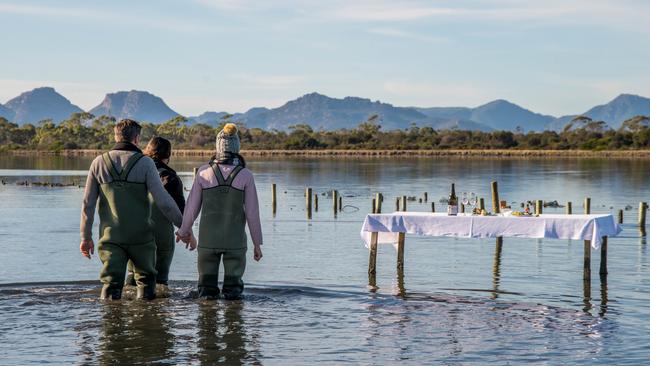
Combined with intimate scale and strong relationships, it’s a recipe for culinary success. “The food miles are short and the relationships are tight in Tassie. The producers are mentioned on the menus. They become partners and some have become really good friends.”
Tasmania – the Apple Isle, then the pinot isle and then the whisky isle – is now the whole bloody larder and cellar. Mele remains frustrated, however, that sourcing some produce can be “incredibly difficult”, particularly seafood and meat that’s in hot demand for export. “It’s easier to get some of the best Tassie seafood in Sydney than in Tassie,” he says, adding it took him two years to negotiate a supply of clams previously sent to Melbourne.
Red tape also stymies attempts by local chefs to buy direct from fishermen, while a shortage of well-managed abattoirs is a check on almost insatiable demand for ethically-produced fine meats. On the upside, Mele believes Tasmanians lead the country in understanding seasonality and being willing to embrace menus that reflect it. This is due in part to the island’s distinct seasons and parochialism. The timing of the cherry season or the impact of wet weather on the potato harvest can be popular topics of conversation.
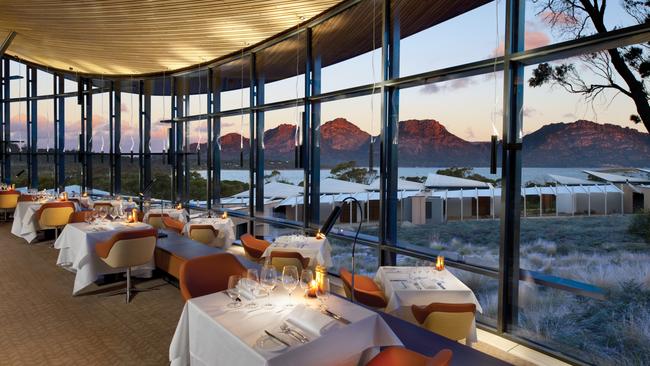
Another who has returned to this state of origin is chef Paddy Prenter, who made a name for himself in Melbourne at Hammer and Tong and Supernormal. Having never lost his love of Tasmania, Prenter returned in 2014 just as the state was experiencing a blossoming of premium dining. “There were venues popping up and taking off and really changing the food scene,” he recalls.
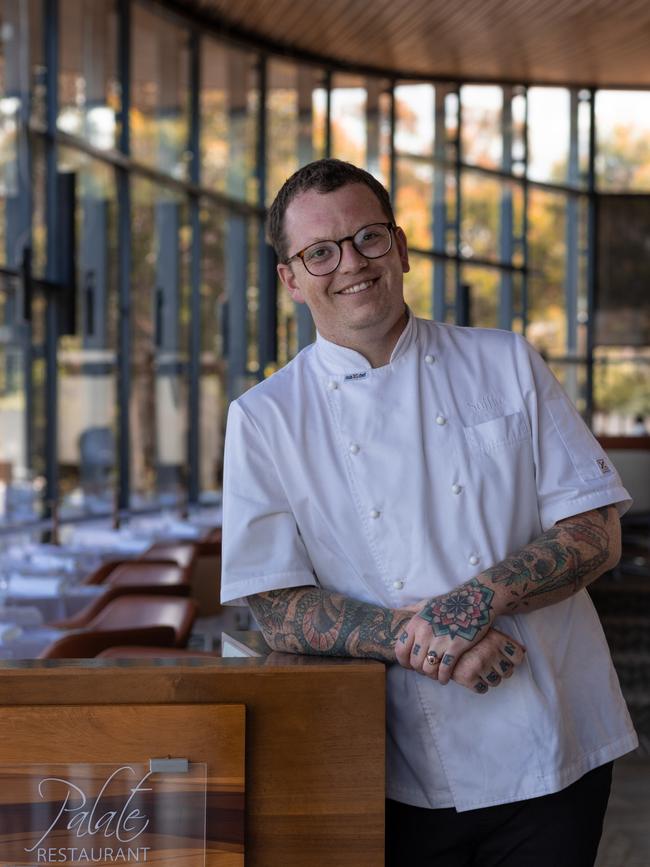
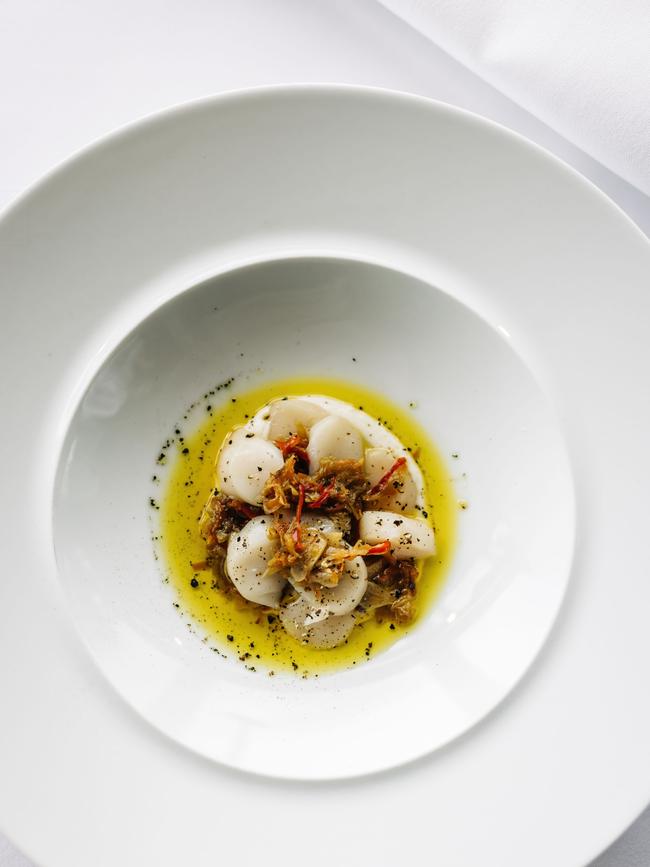
He worked at the well-regarded Franklin in Hobart (sadly a casualty of Covid), and one of the finest vineyard restaurants, Frogmore Creek. Now executive chef at Palate, in the luxury Saffire Freycinet resort at Coles Bay, Prenter says it was a period during which a few individuals showed what could be done.
“Analiese Gregory came down from Sydney, and we started to get some big names,” he recalls. “People started to look at Tassie as the place to go, particularly with the produce available to us as chefs.”
The state’s “pull up the drawbridge” approach to Covid-19, with rigidly controlled borders, took a heavy toll, but the bounce-back since has been remarkable.
“Now if you walk around Hobart there are wine bars popping up, whisky bars popping up and fantastic little eateries, very similar to Melbourne and Sydney,” Prenter says. Things have changed for a younger generation of local chefs, he reckons. “For those who appreciate what’s around them and the produce we have, I think the skill-set is here with the chefs in the state. There’s plenty of opportunity now to stay.”
Saffire Freycinet is among Tasmania’s many tourism operations with a specific focus on food, wine and spirits; the resort offers experiences with local oyster growers, wine makers, and honey and whisky producers.
“We are seeing a lot more people come with that food and wine interest, whereas before it might have been to walk into Wineglass Bay or experience the national park,” Prenter says. “It’s pushing boundaries and getting people excited about what’s in front of them.”
These enrich the guest experience and provide another valuable revenue source and reputational benefit for the producers. Saffire’s guests are offered tasting tours of one of the state’s newest distilleries, Waubs Harbour Whisky, at Bicheno. Founded by returned expat Tasmanians Tim and Bec Polmear, and Tim’s brother, experienced distiller Rob Polmear, Waubs makes “maritime whisky”.
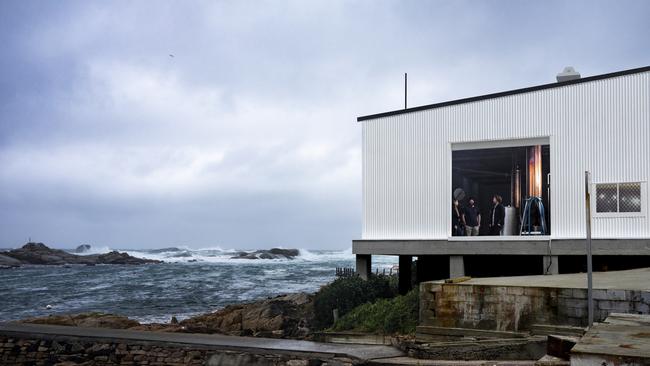
“Rob had been making great Tasmanian whisky for Lark Distillery and Overeem Whisky, but no one in Australia was really doing maritime whisky in the way the Scottish have been doing for 200 years,” Tim Polmear says.
The concept is to mature whisky in a sea air environment, creating a unique flavour – a kind of atmospheric terroir. “Against the wild ocean you have a saline air surrounding those barrels and making its way into the casks, and a proper maritime climate providing a very stable temperature base,” he says.
Waterfront oyster hatchery and abalone farm buildings were purchased and restored for this purpose, and the distillery issued its first-release whiskies in April this year.
The trio has been overwhelmed by the response. “We sold 600 bottles in one night – we sold out of the Founders Reserve within two hours,” he says. “We have a pretty solid following of people who love this whisky.”
The growth in Tasmanian distilling has been extraordinary. There are an estimated 80 whisky and other spirit distillers in the state, following stellar growth in new entrants since 2014. What was once a fringe industry of rogues and mavericks now has $670 million of single malt under maturation and annual production of $424 million, forecast to grow 32 per cent in 2023/24.
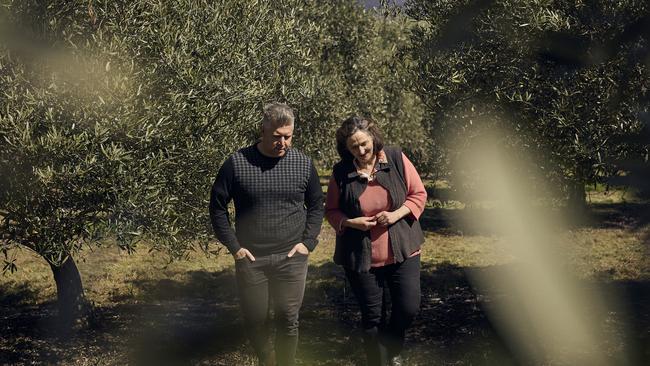
Like the food and produce scene, it’s a significant industry consisting of small, often family outfits. Polmear believes Tasmania can accommodate still further entrants, if they offer a point of difference. “We are still producing nothing [in volume terms] compared to the larger industries of Scotland, Japan and Ireland, but it is becoming more competitive at a domestic level. So you have to stand out, and you have to be genuinely good. We didn’t skimp from day one. We said, ‘No shortcuts – we are going to create a whisky true to its provenance’. We didn’t want to just create a marketing story; we wanted to create a whisky that was super-genuine in a place that is super-genuine.”
Analiese Gregory, who now works as a freelance chef and culinary expert, says the beautiful thing about Tasmania is the unique experiences it offers. “Since Covid I have found that people are looking for authentic experiences, whether that’s visiting a private island or choosing to do something different, within Australia, rather than going on the usual overseas trips. There is so much demand. I was cooking for a couple on Bruny Island recently and I moved the table to the beach. I just had a little robata grill down there and as I was cooking, a couple of seals swam by. And I said, ‘Oh, this is actually pretty amazing’.”
Hundreds of individual “Tassie moments” are helping to create something bigger: the transformation of a state in culinary, social and economic terms. As producers, chefs and tourists alike continue to gravitate to Tasmania, its long-term success rests on upholding this commitment to quality, to place and to point of difference.
TASSIE’S CULINARY MOVERS AND SHAKERS
Massimo Mele
A long-time star of Sydney dining, Mele returned home to Tasmania and has found considerable success at Peppina restaurant in Hobart, where he is culinary director, and Grain of the Silos in Launceston, where he is food director. He is a champion of Tasmanian produce and growers, cooking almost exclusively with local produce.
Rodney Dunn and Severine Demanet
The husband and wife team of Dunn and Demanet have hit pay dirt at the Agrarian Kitchen in New Norfolk, outside Hobart. Their extraordinary garden and cooking school, situated in and around a gothic-looking former mental institution, is a culinary jewel. Go to dine, or to learn to cook.
Analiese Gregory
The one-time Sydney food darling has relocated to the southern wilds of Tasmania to “fish, forage, hunt and discover”. Her recent book How Wild Things Are is a gorgeous evocation of the Tassie culinary adventure.

Matthew Evans
The acerbic food critic gave up reviewing Sydney restaurants to open Fat Pig Farm in the Huon Valley. The author, cookbook writer and TV star has recently closed the farm to the public in order to take a break, saying it was time to re-evaluate the farming life. But his influence in the past decade on making Tassie cool cannot be underestimated.
Peter Gilmore
One of Australia’s culinary big guns, the executive chef at Sydney harbourside restaurants Quay and Bennelong, Gilmore has recently bought a 3ha farm south of Hobart on which to grow specialist ‘’cold-climate vegetables and fruit.





To join the conversation, please log in. Don't have an account? Register
Join the conversation, you are commenting as Logout